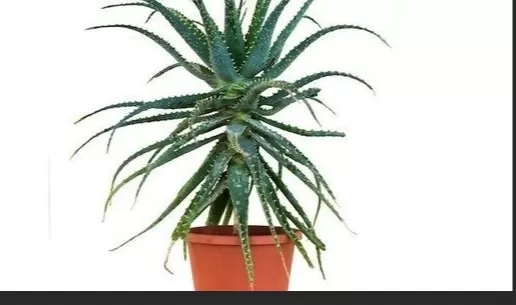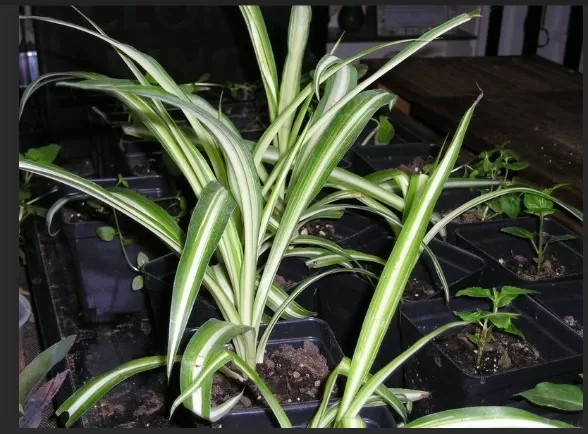Hardy Houseplants: 5 (Nearly) Kill-Proof Varieties. If you’re looking to elevate your home decor while improving the Air Quality, incorporating easy houseplants is an excellent solution. These plants not only add aesthetic appeal but also act as natural air purifiers.
By selecting the right plants, you can create a healthier and more visually appealing environment. This article explores a variety of easy-to-care-for houseplants that will enhance your decor and contribute to cleaner and fresher air in your dwelling. Discover the perfect plants to transform your home into a green oasis.
Spider Plants: A Gateway to Greenery, Easy Propagation and Care

Described as a “gateway plant” by Dr.
Mattson, spider plants are not only simple to propagate but also require minimal care. Dr.
Mattson suggests that taking a cutting, placing it in water until roots develop, and then transferring it to soil is an incredibly easy way to have spider plants adorning shelves near windows throughout your home. With their hassle-free propagation process, spider plants serve as an accessible introduction to cultivating greenery.
Mother-in-Law\’s Tongue: An Elegant and Resilient Houseplant
According to Dr.
Mattson, Mother-in-Law’s Tongue is not only visually appealing with its elegant and structured shape but also remarkably resilient. The plant’s architectural spikes can reach heights of 3-4 feet, and it is capable of thriving in various indoor environments. For optimal growth, it is recommended to place the plant near a window that receives partial to full sunlight and water it approximately once a week.
Unlocking the Secrets of Orchids: Simplicity in Blooming with the Moth Orchid

Contrary to their perceived difficulty in reblooming, Dr.
Mattson asserts that the moth orchid, also known as Phalaenopsis, is not as finicky as it is believed to be. According to Dr.
Mattson, orchids are relatively easy to care for, as long as one understands their natural requirements: abundant sunshine and less water than what most gardeners tend to provide. It is recommended to water the orchid once a week and stimulate another cycle of blooming by placing it in a cooler environment at around 60 degrees Fahrenheit.
Enliven Your Windowsill with African Violets: Low-Maintenance Plants with Charming Purple Blooms
African violets, with their delightful purple blossoms, effortlessly add vibrancy to any windowsill.
They thrive when placed in areas with indirect sunlight and require consistently moist soil. To ensure continuous blooming, it is recommended to use a specialized fertilizer throughout the year, excluding the winter season.
The Versatility of Aloe Vera: A Plant with Aesthetic Appeal and Therapeutic Properties

Dr. Neil Mattson, an Assistant Professor of Floriculture Extension in Cornell University’s Department of Horticulture, acknowledges the multifunctionality of the aloe vera plant. In addition to its visual allure and low-maintenance nature, the plant’s spikes contain a gel that possesses rejuvenating and moisturizing properties, making it beneficial for healing purposes.
Aloe vera, known for its striking visual appeal and minimal care needs, offers more than just an attractive addition to your home. The gel contained within its spikes holds a multitude of rejuvenating and moisturizing properties that have been recognized for their healing benefits. The gel is widely used in skincare and beauty products for its ability to soothe and hydrate the skin, promoting a healthy complexion.
The healing properties of aloe vera gel extend beyond skincare. It is often applied topically to soothe minor burns, cuts, and insect bites, providing relief and aiding in the healing process. The gel’s cooling and anti-inflammatory properties make it a natural remedy for sunburns, offering comfort and assisting in the regeneration of damaged skin.
Not only is aloe vera aesthetically pleasing and beneficial for its healing properties, but it is also an excellent air purifier. Like other houseplants, aloe vera absorbs carbon dioxide and releases oxygen, helping to improve the air quality in your home.
Incorporating aloe vera into your home decor is simple. The plant thrives in well-draining soil and requires moderate sunlight, making it suitable for various indoor spaces. Whether placed on a sunny windowsill or as part of a larger indoor garden, aloe vera adds a touch of greenery and natural beauty to any room.
With its multifunctionality and low-maintenance nature, aloe vera is an ideal houseplant for those looking to enhance their decor while enjoying the benefits of improved air quality and natural healing properties. By welcoming this remarkable plant into your home, you can create a visually appealing and healthier living environment.
*The information is for reference only.